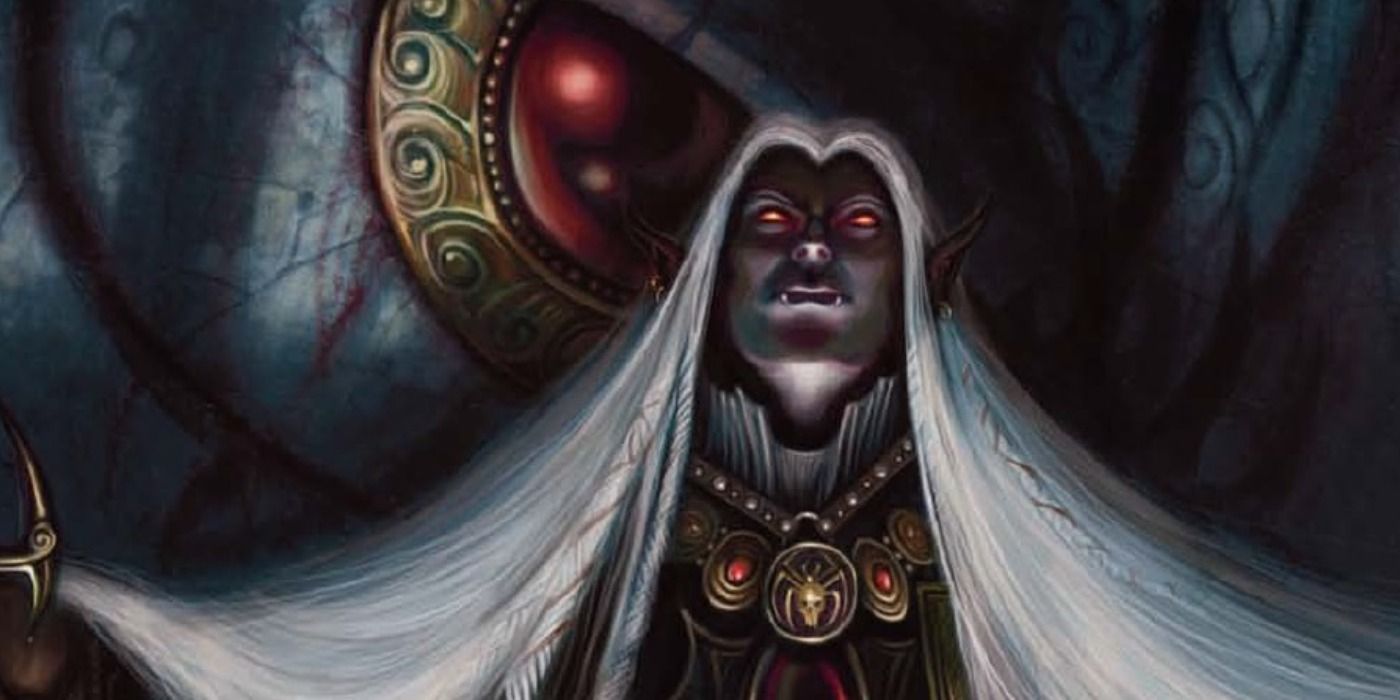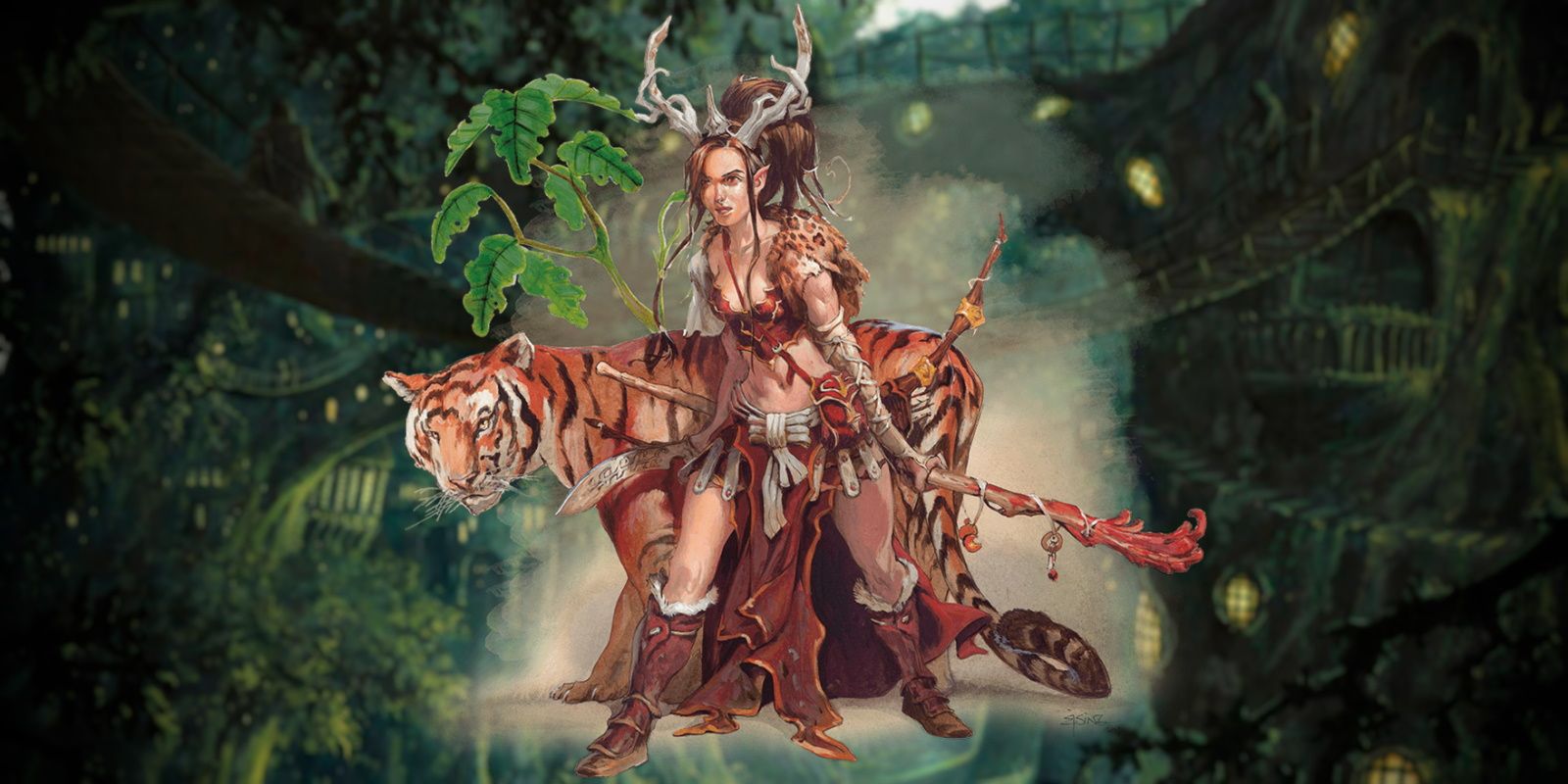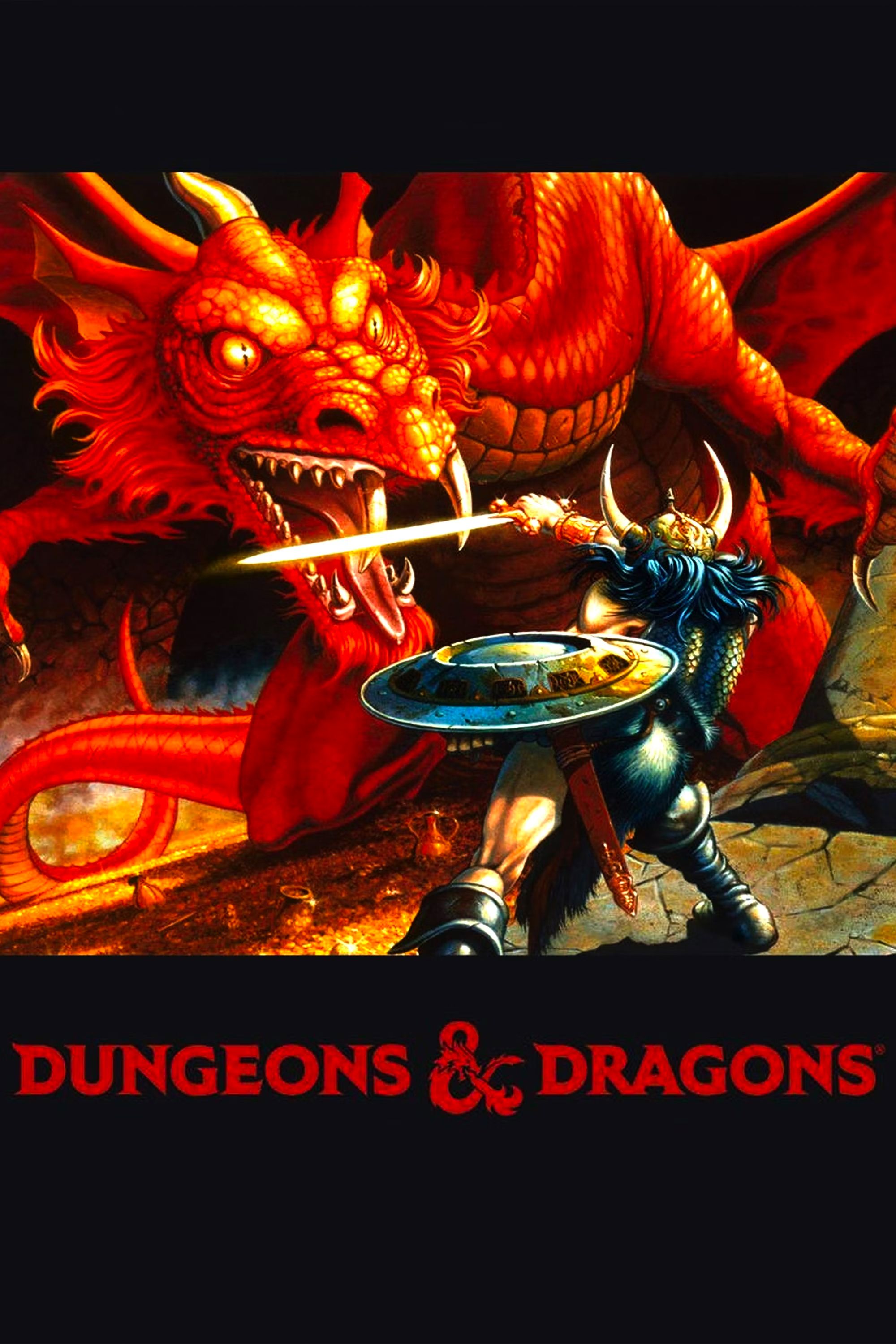While the upcoming 2024 Dungeons & Dragons Monster Manual will include the majority of new and updated creature stat blocks, the 2024 Player’s Handbook has a few of its own. The book’s selection includes some classic monsters from previous editions, each with slight or major changes to their mechanics. Some have gotten more dangerous, others more durable, and a few have received entirely new abilities.
Most of the creatures included in the handbook are beasts, with a couple undead, fiends, celestials, and aberration thrown in for good measure. This is because the monsters in this book are all options for stat blocks that the players themselves can control, either as summons, druidic transformations, or creatures the party befriends. While the summoning mechanics of certain spells have changed entirely with this new book, many class options for familiars and wild shapes remain, albeit with some new powers.
10 The Return Of The Rat
This Little Guy Illustrates The Changes Made To Many Familiars
Many a wizard has chosen a rat for their familiar over the years, given their small, unassuming nature and sense of smell. Much like other challenge rating 0 creatures, such as the cat, frog, or raven, rats don’t have much combat capability, but can provide some creative forms of recon and assistance. There are two big changes to the rat stat block that are also present for many other tiny beasts.
For one, the rat has a new trait called “agile,” which makes them immune to opportunity attacks when they leave enemy reach. It’s nothing grand, but it makes the animal feel more distinct; comparably, cats get a higher jump distance, ravens retain their mimicry feature, and so on. These little changes are nice, since they make the choice of which animal players choose as their helper feel more impactful.
Related
Every D&D 5e Playable Race That’s Based On A Real Animal
D&D’s playable races take inspiration from many sources, including the natural world. Here’s every race that’s inspired by a real animal.
The other big change is one that has happened to most beasts in this book, and that is the removal of the “keen sense” features. No longer do these animals have advantage on certain kinds of perception checks that rely on smell, hearing, or sight. Many of them, including the rat, now have a higher perception skill modifier in lieu of this missing feature. Mathematically, the average perception check rats make will now be one or two points lower, but of course, they may be able to gain advantage another way.
9 The Slaad Tadpole Gets Some Minor Stat Buffs
A Weird New Choice For Certain Warlocks
Many players may not know what a Slaad is, but they’ve actually been around in D&D since the early 80s. These frog-like creatures grow from tadpoles which physically resemble gross, evil worms, and they get their own stat block in the 2024 PHB since warlocks with the pact of the chain can now choose them as a familiar. With a 1/8 challenge rating and fairly low stats, it is uncertain whether anyone would want to, but the Slaad tadpole does get some changes to its 5th edition stats.
The tadpole now has a burrowing speed of ten feet, putting it just above the badger for fasting burrowing familiar. It also deals more damage with its bite, with a whopping one extra point of damage on average per attack. It may not be the most powerful choice warlocks have for their pact of the chain, but it is certainly an interesting one.
8 Sprites Are Better Than Their Challenge Rating Gives Them Credit For
A Number of Unique Attacks Makes These Fey Stand Out
Another new choice for the pact of the chain warlock is the sprite, a tiny fey creature with some pretty neat powers. Sprites have gotten several upgrades from their previous form. These include more health, higher weapon damage, and an attack that can now charm creatures very easily. It’s a little strange that they are still considered 1/4 in challenge rating when they have this much more up their sleeves.
Sprites in 5th edition previously had a measly two hit points; now, they have five times as many. Still not high, but definitely better. Their sword attack actually has a damage dice associated with it now, rather than just dealing one point of damage. And their bows, rather than potentially poisoning targets, now automatically charm them for one turn. This is in addition to them retaining their heart sight feature and invisibility at will, making them quite useful inside and outside combat.
7 The Quasit Returns As A Chaotic Summon Choice
Warlock Familiars Get Some Stat Improvements
The quasit was one of the original options for warlocks taking the pact of the chain, alongside the imp and pseudodragon. All three return in this book, though none of them with especially big changes. The biggest difference is in the health and resistance of the imp and the quasit.
Both used to have quite low hit point totals, the quasit only having seven, but now each have over twenty. On the other hand, both used to have resistance to nonmagical bludgeoning, piercing, and slashing damage, which they now lack. The extent to which their durability has actually been improved will vary from game to game. Beyond that, options like the quasit remain among the best for warlocks, able to turn invisible, shape shift into normal animals, and make attacks with significant damage.
6 The New Giant Spider Has Its Pros And Cons
Giant Animals Get Better Health, But There Is A Trade-Off
Several animals in D&D have giant variants, with higher damage and more health. The new PHB has made these giant versions of beasts a little more formidable across the board, with some getting higher health and others better ability bonuses to their attacks. But the giant spider has definitely seen the most impactful changes. Specifically, their two unique actions have gotten updates.
The giant beasts can serve as enemies, but more often get employed as druidic transformations via wild shape. Thus, any buffs or debuffs made to them can be seen as also altering the power of the druid.
Their bite once dealt piercing damage, with the chance to deal poison damage if creatures fail a saving throw. That save has been done away with, making the poison damage always apply, leaving the bite more deadly in general. Their web still requires a saving throw, though it is one point higher in difficulty.
However, these giant spiders will likely find it much harder to enweb anyone. The old stat block said that the spider makes an attack roll, restraining creatures on a hit. The creature could only make the save on later turns as an action. Now, the web is just a saving throw, which does nothing if the creature succeeds initially.
5 Skeletons Pose More Of A Threat In A Necromancer’s Army
Higher Stats Make This Summon More Effective
Skeletons and zombies are a necromancer’s bread and butter. Using the spell animate dead, they can summon armies of the undead over time in these two varieties. Typically, zombies serve more effectively as tough, front-line troops, while skeletons are better off hanging back and making ranged attacks.

Related
Dungeons & Dragons: All Necromancy Spells By Level
Necromancy is one of the eight schools of magic in Dungeons & Dragons, with its spells able to bring back the dead or create the undead.
Now, skeletons might just be the better option overall. That’s because zombies have gotten a health debuff, while skeletons have received a bonus to their dexterity modifier. That has raised their armor class and the damage they do with their bow and short sword, and they can now serve just as well as zombies in the front line.
4 Horses Now Work A Little Differently
New Mounts For A New Ruleset
There are three types of horses that can serve as mounts: riding horses, draft horses, and war horses. All three get updated stats in the new PHB, though none of them are very different from how they worked before. As always, riding horses are the fastest option, draft horses are the sturdiest, and war horses can deal the most damage with their attacks.
The difference is just in how much each of these variants is better than the others at its specified tasks. Draft horses are now objectively worse, with lower health and damage. Riding horses make a bit more of a trade, also with lower health, but also higher dexterity to reflect their speed and reflexes. The war horse is still technically the strongest in combat out of the three options, though its damage output has gone down. All in all, these horses are a little less distinct than they once were.
3 Dire Wolves Feel More Scrappy In How They Fight
Lower Defense, Higher Offense
While many of the beasts in this rulebook have higher hit point totals than before, the dire wolf goes the opposite direction. This may have been necessary for balance, given how strong the previous 5th edition dire wolf was in combat at early levels. This new stat block lowers their defenses slightly, making them easier to wallop in fights.
But the dire wolf has received one important change to its offense. Now, when it charges a creature and attacks it, that creature is automatically prone. This used to required a saving throw from the hit creature, but now, a hit is all it takes. Creatures have advantage on melee attacks against prone targets, making this beast great for setting the rest of the party up to get better hit chances. It may not be the tank it once was, but the dire wolf still has a place in a moon druid’s arsenal.
2 Reef Sharks Can Move On Land Now
Very Slowly And Not For Long, But They Can
Reef sharks are a common early choice for moon druids looking for a transformation that can fight underwater. The restriction druids had on not taking the form of sea life until later levels has been lifted, making the reef shark easier to access. It gets slightly better damage from its bite, but a more comical change comes in the form of its new walking speed.

Related
D&D: How To Use Wild Shape (The Right Way)
As a Druid, Wild Shape can be an intimidating ability to master, but it’s an essential part of playing the class. Here are some tips for new players.
Most underwater, non-amphibious life in 5th edition had a walking speed of 0 feet, meaning on land they couldn’t move at all. The reef shark was like this, but somehow, over the past several years, it has developed the ability to walk very slowly across land. It has a five-foot walking speed now in addition to its swimming speed. This is probably just to portray how a shark could flop across land to cover small distances, but one could also imagine these new sharks have very small feet for marching towards land-bound foes.
1 The Lion Has A New Move Inspired By A Player Species
The 2024 Player’s Handbook Includes The Leonin (In Spirit)
Big, dangerous beasts like lions, tigers, and bears also feature in the 2024 Player’s Handbook. They stats are pretty unchanged, at least in health and damage, though the lion in particular has new ability it can use to frighten prey. Mechanically, it is virtually identical to a species ability available to the leonin in previous books.
The ability, roar, just allows lions to frighten nearby creatures for one turn if they fail a saving throw. It’s simple, but effective, and a good feature for beasts to effect the battlefield by doing more than just attacking. Some might say that the Leonin ability was in fact inspired by real-life lions, which is true. But it’s great to see the actual animal get this fearsome feature for itself.
All in all, these updated creature stat blocks reflect the rules changes made to Dungeons & Dragons at large. There are some options to make different creatures feel distinct, and the balance of health and damage has been tweaked. When the new Monster Manual finally comes out later this year, it will be revealed whether these changes are also reflected in creatures player parties are likely to fight.
Source: D&D/YouTube, 2, 3

Dungeons and Dragons
- Original Release Date
- 1974-00-00
- Publisher
- TSR Inc. , Wizards of the Coast
- Designer
- E. Gary Gygax , Dave Arneson
- Player Count
- 2-7 Players





